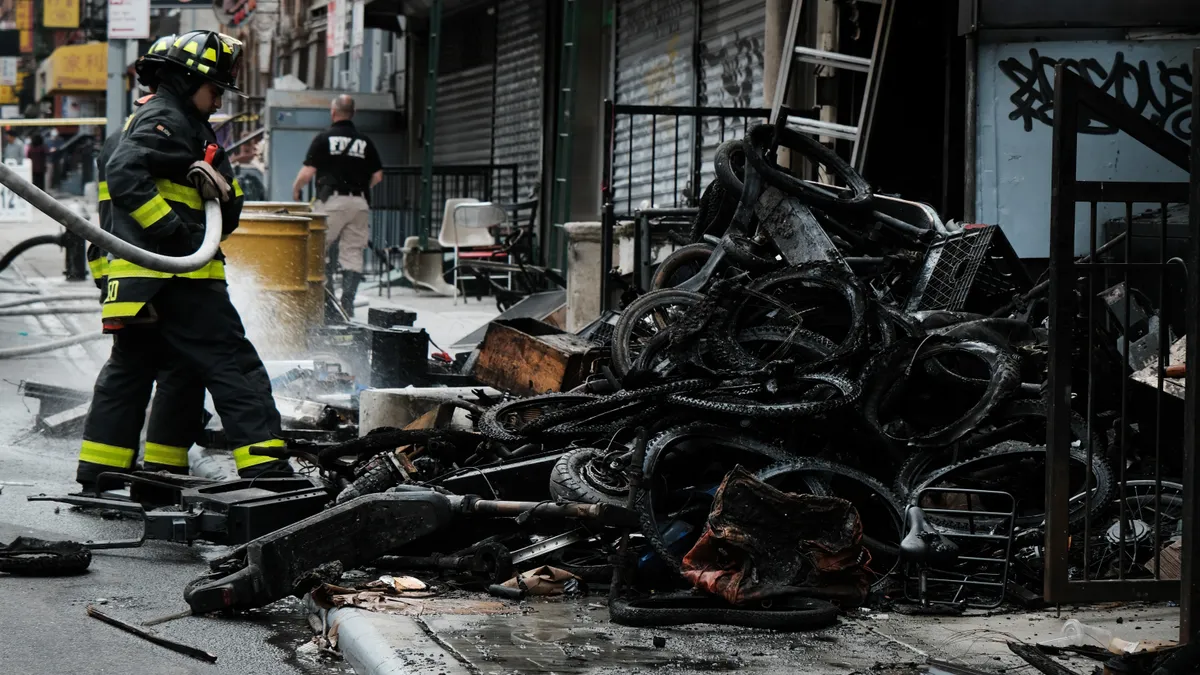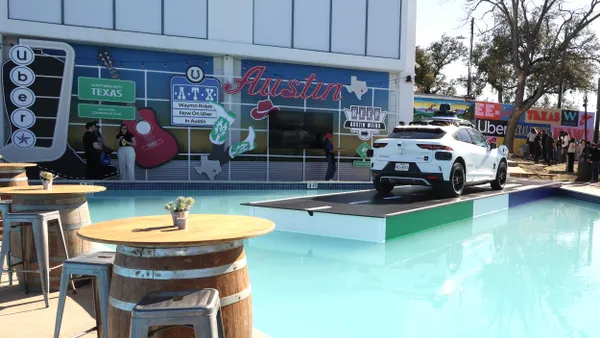In 2023, e-bike batteries started 268 fires in New York City, killing 18 people and injuring 150. San Francisco firefighters responded to at least 41 battery fires last year. In January, the lithium-ion battery on an electric bike caught fire in a Toronto subway car, and in March, an e-bike caught fire in a guest room of a hotel in Portland, Maine.
The link among all these incidents is the lithium-ion battery that powers electric bikes and scooters. It’s the same technology used in cell phones and laptop computers. And perhaps because we’re comfortable with unattended daily charging of these personal devices, e-bike owners often treat them the same way.
“The approach tends to be more casual, just the way we do with our phones,” said Sayon Deb, director of primary insights for UL Standards & Engagement, a nonprofit that develops product safety standards.
The organization published a report today outlining the risks of lithium-ion batteries in electric mobility devices. The report found that e-bike owners are largely unfamiliar with the technology powering their rides and underestimate the dangers these batteries present to themselves. More than half of e-bike and e-scooter owners don’t know their device is powered by a lithium-ion battery.
Typical laptop batteries are rated between 2.2 to 2.8 amp hours. E-bike batteries generally range from 10 amp hours to 20 amp hours: much larger and more powerful than a typical laptop battery. “This large battery, you're leaving it plugged in at night to go to sleep; it's probably right next to you in bed or in the hallway,” Deb said.
The report found that 49% of e-bike owners who charge at home block their own exit path with their bike, unaware that an e-bike fire can engulf a room in less than 20 seconds, according to testing by the Fire Safety Research Institute.
Users surveyed for the report said they received little, no or inadequate information from manufacturers and retailers regarding battery safety and proper charging methods. Lithium-ion batteries can overheat and release a flammable gas, a condition known as thermal runaway. Cheap, low-quality batteries that aren’t certified by a reputable organization are more likely to have defects that can lead to fires.
“We do see an influx of cheaply made batteries,” Deb said. “We always recommend looking for that UL sticker on the bike, looking for some kind of third-party safety certification for the battery as well as the bike itself.”
E-bikes are a relatively new and fast-growing product that isn’t highly regulated, according to Consumer Reports. But that’s beginning to change. In New York City, Local Law 39, which went into effect in September, prohibits the sale of e-bikes, e-scooters and batteries that don’t meet recognized safety standards. E-bikes will have to be certified to the UL 2849 standard, developed by UL Standards & Engagement. In February, New York City also began testing public e-bike charging hubs and battery-swapping stations.
San Francisco established new safety standards in March, limiting the number of electric mobility devices per household and mandating separate charging outlets. On the federal level, bills have been introduced in Congress to cut down on imports of unregulated e-bikes and batteries and to require the Consumer Product Safety Commission to set safety standards for e-bikes and e-scooters.
Deb recommended that e-bike and e-scooter buyers read the owner’s manual for their vehicle and talk through proper procedures with the retailer. He urged consumers replacing a battery to purchase a high-quality battery that is correct for the device. “Manufacturers and retailers can play a strong role here in terms of educating consumers,” he said. These are “very simple steps that consumers can take to make sure that the e-bike that they're using and relying on a regular basis continues to be a safe mode of transportation for them.”











